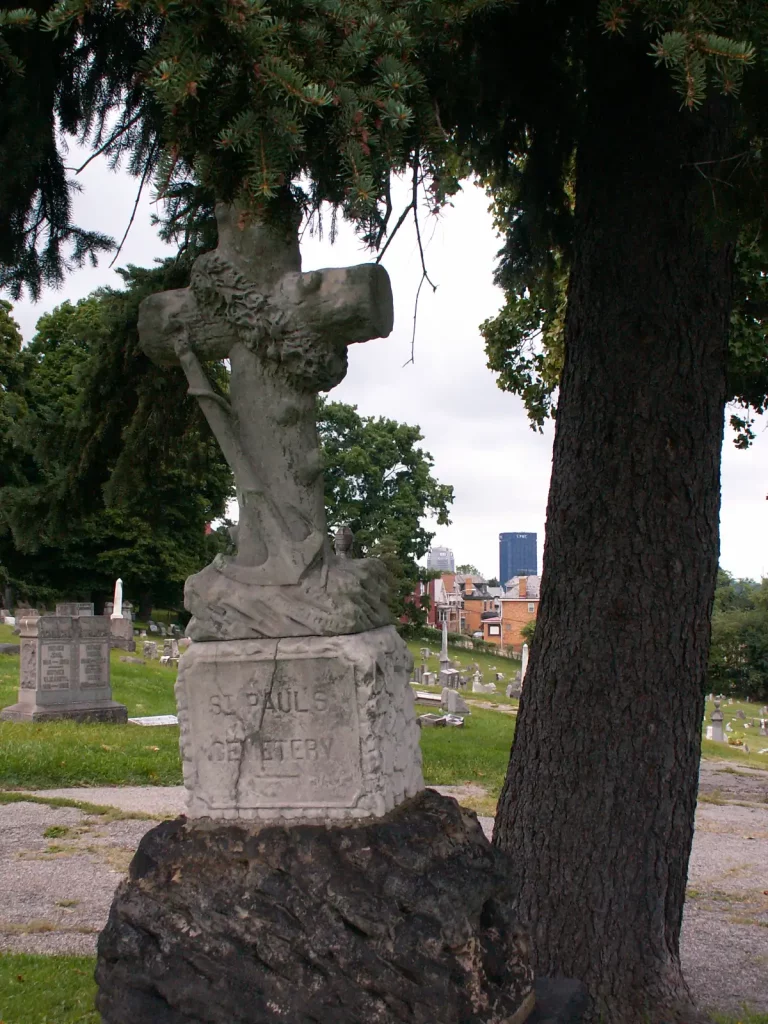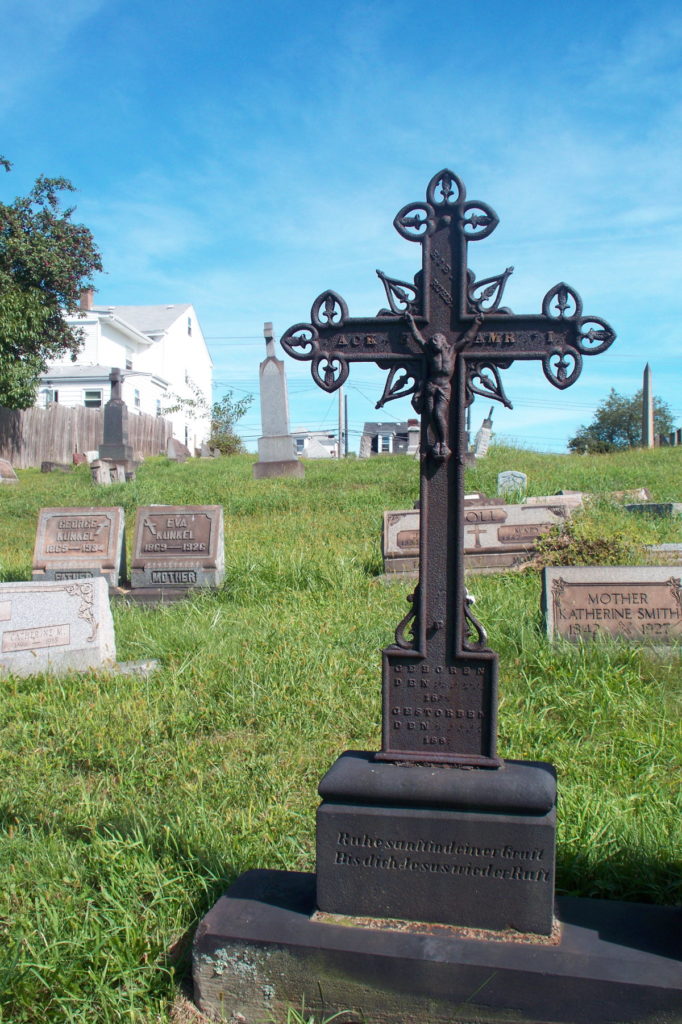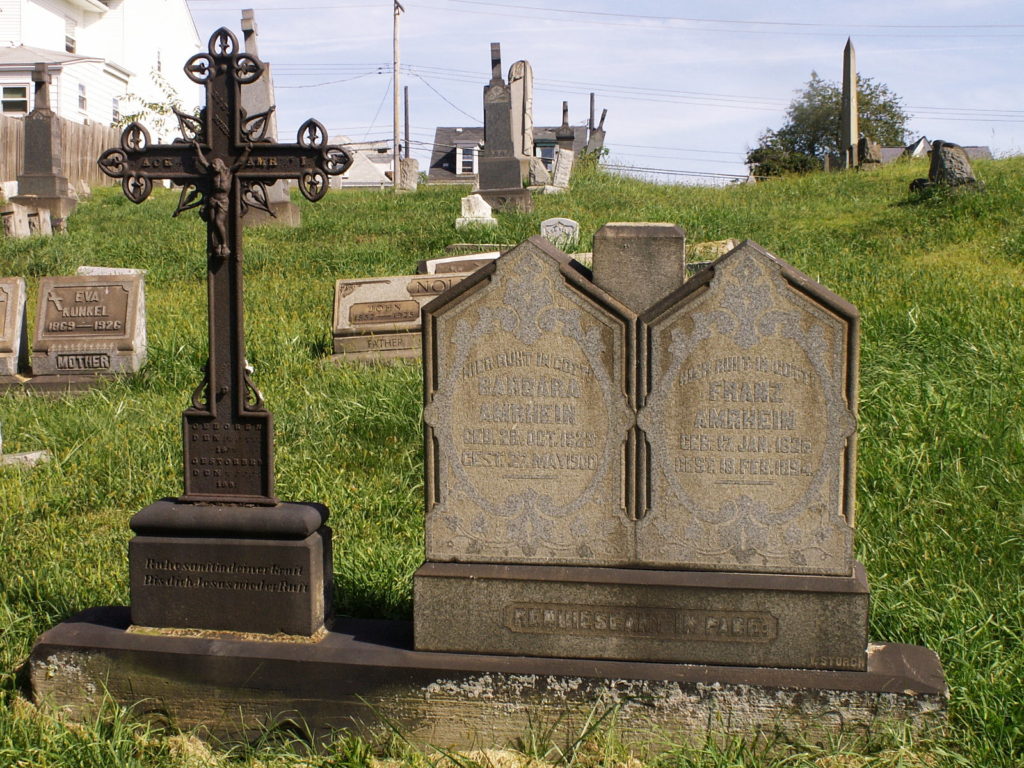
This rather small monument is placed in a curiously obscure location: was it originally nearer the entrance to the cemetery?

This rather small monument is placed in a curiously obscure location: was it originally nearer the entrance to the cemetery?

Iron monuments are rare, but in this little German Catholic cemetery this same ornate iron cross occurs twice. it was not a good idea from a genealogical point of view: the letters are separate pieces, and they fall off as bits of the monument rust. Today we can guess the surname “Amrhein” because the cross occurs in a group with a double granite monument, but there is not enough information to fill in the first name or the birth and death dates (18— to 188-).

Note: The pictures in this article disappeared with their image host, but we have added a more recent picture from 2023. The monument, dated 1888, commemorates priests of St. Michael’s parish.


This grouping more notable for its position than for its artistic quality (which is quite good but not extraordinary); it stands at the edge of a steep slope with a panoramic view of the Monongahela valley below. St. Michael’s is a German Catholic cemetery, so the inscription (“I am the resurrection and the life…”) is in German (with “May they rest in peace” Latin, of course).


Daniel Wallace and Daniel Wallace are buried here. The monument carries a Star of David; the statue (by an unknown sculptor) carries a cross and Bible. We suspect that the Star of David, or Seal of Solomon, is a Masonic rather than Jewish symbol here.
